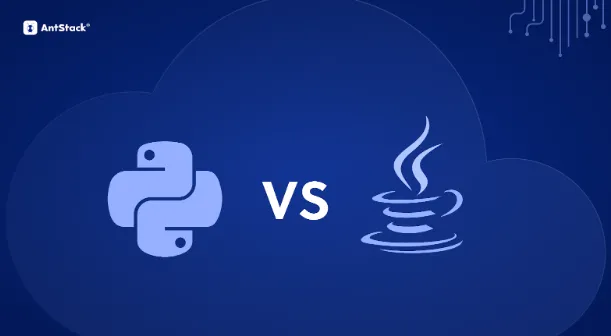When choosing between Python and Java for serverless data engineering, consider performance, ease of development, and framework compatibility. Python excels with shorter cold start times, simpler syntax, and strong machine learning integration, making it ideal for rapid prototyping. Java offers robust execution speed and seamless big data framework support but has a steeper learning curve. Your decision should align with your project’s scalability needs. Explore further to understand how each fits your workflow.
Performance in Serverless Environments
When choosing between Python and Java for serverless data engineering, performance in serverless environments is a critical factor to think about. Execution time, cold-start delays, and memory usage directly impact how efficiently your serverless data engineering company delivers solutions.
Python excels in shorter cold start times due to its lightweight nature, making it a viable choice for intermittent workloads. Java, though robust, often struggles with longer cold starts, which can hinder performance in data-intensive tasks. The choice of JSON parser significantly impacts performance, with faster parsers reducing processing time and improving efficiency.
Optimizing resource allocation, like memory, is essential for both languages to maximize processing speed and cost-efficiency. For simpler tasks, Python’s ease of development often aligns well with serverless data engineering services, while Java may require more tuning for scalability.
Proper memory management guarantees smoother S3 read throughput, enhancing overall performance in modular, scalable workflows. Leveraging cursor-based pagination can also optimize data retrieval in serverless environments, ensuring efficient handling of large datasets.
Learning and Development Effort
Python’s simpler syntax and concise structure make it easier to learn, especially for beginners, while Java’s verbosity and strict standards create a steeper learning curve. Dynamic typing and rapid prototyping capabilities in Python allow for faster development and deployment of solutions compared to Java.
Python’s serverless-native approach further enhances agility, making it ideal for modern data engineering workflows. Java, though more complex, guarantees robust code but requires more effort to master and implement efficiently.
Ease of Learning
Because Python emphasizes simplicity and readability, it’s often easier to learn for beginners in serverless data engineering. Data analysis and machine learning are areas where Python excels, further enhancing its appeal for beginners.
Here’s why Python stands out for those exploring serverless data engineering services in India:
- Simpler Syntax: Python’s straightforward syntax reduces the learning curve, making it accessible for quick adoption in data engineering projects. This aligns with the benefits of bundling, which enhances organization and readability in similar ways.
- Abundant Resources: Platforms like Codecademy and Python.org provide interactive tutorials, perfect for beginners.
- Dynamic Typing: Python’s dynamic nature allows you to write less code initially, speeding up the learning process.
- Community Support: Python’s welcoming community offers forums and tutorials, simplifying problem-solving for newcomers.
In contrast, Java’s verbose syntax and complex frameworks like Spring can be intimidating.
For those prioritizing ease of learning in serverless data engineering, Python is the clear choice.
Syntax Complexity
Understanding syntax complexity is crucial for evaluating learning and development effort in serverless data engineering. Python’s syntax is concise, relying on indentation for code blocks, making it resemble pseudocode. Its dynamic typing allows flexibility but may introduce runtime errors. Dynamic typing in Python simplifies the coding process but requires careful handling to avoid errors during execution.
Java, on the other hand, uses curly brackets and static typing, requiring explicit type declarations. This guarantees errors are caught at compile time, improving reliability. Python’s readability often simplifies development, while Java’s explicit structure enhances clarity in large projects. Event-driven architecture in serverless computing aligns well with both languages, enabling efficient handling of diverse triggers.
In serverless environments, Python’s brevity speeds up deployment, whereas Java’s predictability guarantees stable performance. Both languages balance trade-offs: Python excels in adaptability, and Java in consistency, making your choice dependent on project needs and team expertise.
Development Speed
When evaluating serverless data engineering, development speed becomes a practical consideration for learning and implementation. Python’s simplicity and adaptability often give it an edge over Java in accelerating the development process.
- Learning Curve: Python’s straightforward syntax reduces the learning curve, enabling quicker onboarding and faster project starts.
- Rapid Prototyping: Its interpreted nature and dynamic typing allow for rapid prototyping, speeding up iterative development. Deployment with tools like Terraform can further streamline the process.
- Tooling and Libraries: Python’s extensive libraries for data processing and automation reduce the need for custom solutions, saving time.
- Agile Development: Python’s flexibility supports agile methodologies, making it easier to adapt to changing requirements without significant delays.
Data Engineering Frameworks and Tools
You’ll find that popular frameworks like Apache Spark and Hadoop dominate big data processing, with Spark excelling in both batch and stream workloads.
Python’s integration with these tools simplifies development, while Java’s performance makes it a strong choice for scalable, distributed systems.
When comparing orchestration tools, Apache Airflow and Dagster stand out for managing complex workflows efficiently.
Popular Frameworks Comparison
While Python and Java both excel in serverless data engineering, the frameworks and tools they support vary substantially in functionality and use cases.
Below is a comparison of popular frameworks to help you choose the right one for your needs:
- Apache Spark: A unified analytics engine for large-scale data processing, ideal for distributed computing and in-memory performance.
- Apache Kafka: A distributed platform designed for real-time data feeds, making it perfect for high-velocity streaming applications.
- dbt (Data Build Tool): Simplifies data transformations using SQL, enabling version control and seamless integration with data warehouses.
- Terraform: An infrastructure-as-code tool that supports multi-cloud deployments, simplifying resource provisioning and scaling.
Each framework offers unique strengths, so your choice depends on your project’s scalability, real-time processing, and integration requirements.
Big Data Processing Tools
Big data processing tools form the backbone of modern data engineering, enabling efficient handling of massive datasets across distributed systems.
You’ll find Apache Spark ideal for large-scale data analysis, while Apache Hadoop excels in distributed storage and processing.
For real-time data streaming, Apache Kafka is indispensable.
Tools like dbt simplify data transformation workflows in warehouses, and Snowflake offers scalable cloud-based data warehousing.
Java integrates seamlessly with Hadoop and Spark, making it a strong choice for big data, while Python provides PySpark for Spark interactions and Dask for parallel computing.
Cloud services like AWS, Azure, and GCP enhance scalability and streamline data pipelines.
Whether you’re managing ETL processes or ensuring data quality, these tools empower you to tackle big data challenges efficiently.
Serverless Deployment Considerations
When deploying serverless applications, you must prioritize efficient resource management and streamlined processes to guarantee scalability and reliability.
Prioritize efficient resource management and streamlined processes for scalable, reliable serverless application deployments.
Below are key considerations:
- Resource Scaling: Serverless platforms automatically adjust resources based on demand, reducing manual intervention and guaranteeing cost efficiency.
- CI/CD Pipelines: Continuous Integration/Continuous Delivery pipelines streamline deployment, enabling rapid updates and minimizing errors.
- Security Practices: Implement proper secret management, least privilege access, and data encryption to safeguard your functions.
- Staging and Testing: Separate environments for development and production guarantee controlled testing and consistent deployments.
Comparison in Data Analysis Tasks
Data analysis tasks require careful language selection since performance, ease of use, and tool availability directly impact efficiency. Python and Java offer distinct advantages in this domain. For performance, Java excels in execution speed and multithreading, making it ideal for large-scale data processing.
However, Python simplifies development with its concise syntax and extensive data science libraries like Pandas and scikit-learn, enabling faster prototyping. When it comes to tool availability, Java integrates seamlessly with big data frameworks like Hadoop and Spark, while Python dominates in machine learning with TensorFlow and PyTorch.
| Feature | Python | Java |
| Execution Speed | Slower, interpreted language | Faster, compiled with JIT |
| Ease of Use | Simpler syntax, faster learning | Steeper learning curve |
| Libraries | Pandas, NumPy, TensorFlow | Hadoop, Spark, Deeplearning4j |
| Multithreading | Limited by GIL | Robust, supports concurrency |
Future Trends and Adaptability
As serverless data engineering evolves, you’ll find it increasingly built around scalability, adaptability, and automation.
Serverless data engineering thrives on scalability, adaptability, and automation, shaping the future of efficient, cutting-edge solutions.
Keeping up with future trends guarantees you remain competitive and efficient.
- Serverless Adoption: You’ll leverage serverless options to simplify scaling and reduce operational overhead, enabling rapid deployment without server management.
- Real-Time Data Processing: Technologies like Apache Kafka let you process high-velocity data streams, delivering real-time insights for faster decision-making.
- Cloud-Native Engineering: Cloud-native solutions provide flexible scalability, automated infrastructure management, and access to advanced data tools.
- AI/ML Integration: You’ll integrate AI and ML to automate data processing, optimize pipelines, and improve data accuracy for real-time predictions.
Frequently Asked Questions
Which Language Has Better Integration With AWS SDK?
Imagine AWS SDKs as keys to a treasure chest of cloud services. Boto3’s Python key fits seamlessly, unfastening features with ease and speed, while Java’s key, though robust, requires more tuning for ideal performance. Both open doors, but Python’s smoother.
What Are the Debugging Tools Available for Serverless Functions?
You can use tools like AWS SAM CLI, Serverless Offline, AWS Toolkit, X-Ray Tracing, and CloudWatch for debugging serverless functions. These tools support local testing, tracing, monitoring, and IDE integrations across multiple languages.
How Does Each Language Handle API Gateway Integration?
Traversing API Gateway integration feels like choosing a path through a dense forest. Python’s simplicity lights the way with frameworks like Flask, while Java carves a sturdy trail with Spring Boot, ensuring robust, scalable connections for your serverless needs.
Are There Limitations on Library Usage in AWS Lambda?
You’ll face library size limits in AWS Lambda, with zipped packages capped at 50MB and unzipped at 250MB. Optimize dependencies to stay within these constraints; use minimal libraries, AWS Lambda Layers, and avoid unnecessary imports.
Which Language Is Better for Real-Time Data Streaming?
When the rubber meets the road in real-time data streaming, Java’s robust performance, built-in concurrency, and seamless integration with frameworks like Apache Kafka make it the stronger contender for handling high-speed, resource-intensive workflows efficiently.
Conclusion
When choosing between Python and Java for serverless data engineering, it’s not about reinventing the wheel but picking the right tool for the job. Python’s simplicity and vast ecosystem make it a natural fit for lightweight, scalable tasks, while Java’s robustness shines in performance-critical scenarios. As serverless evolves, adaptability is key. Keep your options open don’t put all your eggs in one basket and align your choice with your project’s specific needs and future trends.



